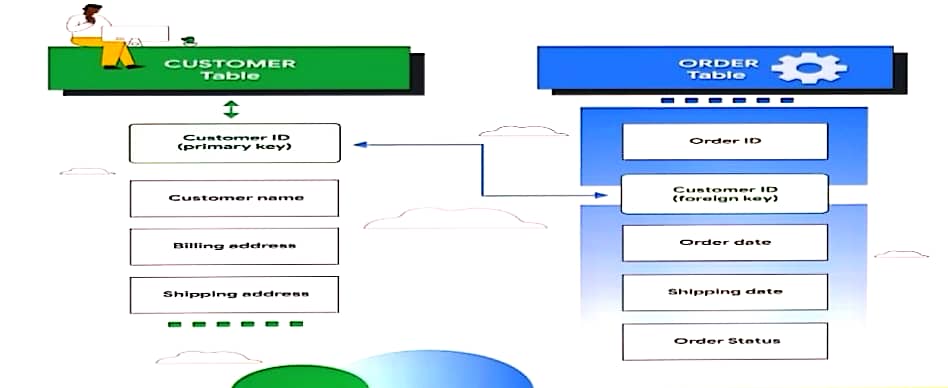A relational database (RDB) is a way of structuring information in tables, rows, and
columns. An RDB has the ability to establish links—or relationships–between
information by joining tables, which makes it easy to understand and gain insights
about the relationship between various data points.

Major advantages of NoSQL databases include:
(i) Flexible Data Model:NoSQL databases are highly flexible as they can store and combine any type of data, both structured and unstructured, unlike relational databases that can store data in a structured way only.
(ii) Evolving Data Model :NoSQL databases allow you to dynamically update the schema to evolve with changing requirements while ensuring that it would cause no interruption or downtime to your application.
(iii) Elastic Scalability:NoSQL databases can scale to accommodate any type of data growth while maintaining low cost.
(iv) High Performance:NoSQL databases are built for great performance, measured in terms of both throughput (it is a measure of overall performance) and latency (it is the delay between request and actual response).
(v) Open-source:NoSQL databases don’t require expensive licensing fees and can run on inexpensive hardware, rendering their deployment cost-effective.
Major disadvantages of NoSQL databases include:
(i) Lack of Standardization:There is no standard that defines rules and roles of NoSQL databases. The design and query languages of NoSQL databases vary widely between different NoSQL products – much more widely than they do among traditional SQL databases.
(ii) Backup of Database:Backups are a drawback in NoSQL databases. Though some NoSQL databases like MongoDB provide some tools for backup, these tools are not mature enough to ensure proper complete data backup solution.
(iii) Consistency:NoSQL puts a scalability and performance first but when it comes to a consistency of the data NoSQL doesn’t take much consideration so it makes it little insecure as compared to the relational database.
Applications of NoSQL
Internet of things (IoT) applications.
Real-time or nearly real-time data processing.
Mobile apps.
Discussion threads.
Social media.
Knowledge bases.
E-commerce.
The Value of Relational Databases:
A relational database is a collection of information that organizes data in predefined relationships where data is stored in one or more tables (or “relations”) of columns and rows, making it easy to see and understand how different data structures relate to each other.
Relational Database
The relational database Model developed by E.F. Codd from IBM in the 1970s, the relational database model allows any table to be related to another table using a common attribute.
Instead of using hierarchical structures to organize data, Codd proposed a shift to using a data model where data is stored, accessed, and related in tables without reorganizing the tables that contain them.
Think of the relational database as a collection of spreadsheet files that help businesses organize, manage, and relate data. In the relational database model, each “spreadsheet” is a table that stores information, represented as columns (attributes) and rows (records or tuples).Attributes (columns) specify a data type, and each record (or row) contains the value of that specific data type.
All tables in a relational database have an attribute known as the primary key, which is a unique identifier of a row, and each row can be used to create a relationship between different tables using a foreign key—a reference to a primary key of another existing table.
Let’s take a look at how the relational database model works in practice:Say you have a Customer table and an Order table.

The Customer table contains data about the customer:
Customer ID (primary key)
Customer name
Billing address
Shipping address
In the Customer table, the customer ID is a primary key that uniquely identifies who the customer is in the relational database. No other customer would have the same Customer ID.
The Order table contains transactional information about an order:
Order ID (primary key)
Customer ID (foreign key)
Order date
Shipping date
Order status
Here, the primary key to identify a specific order is the Order ID. You can connect a customer with an order by using a foreign key to link the customer ID from the Customer table.
2 responses to “WHAT IS RELATIONAL DATABASE IN NOSQL”
-
[…] FEATURES OF NOSQL: […]
-
[…] Characteristics […]

Leave a Reply